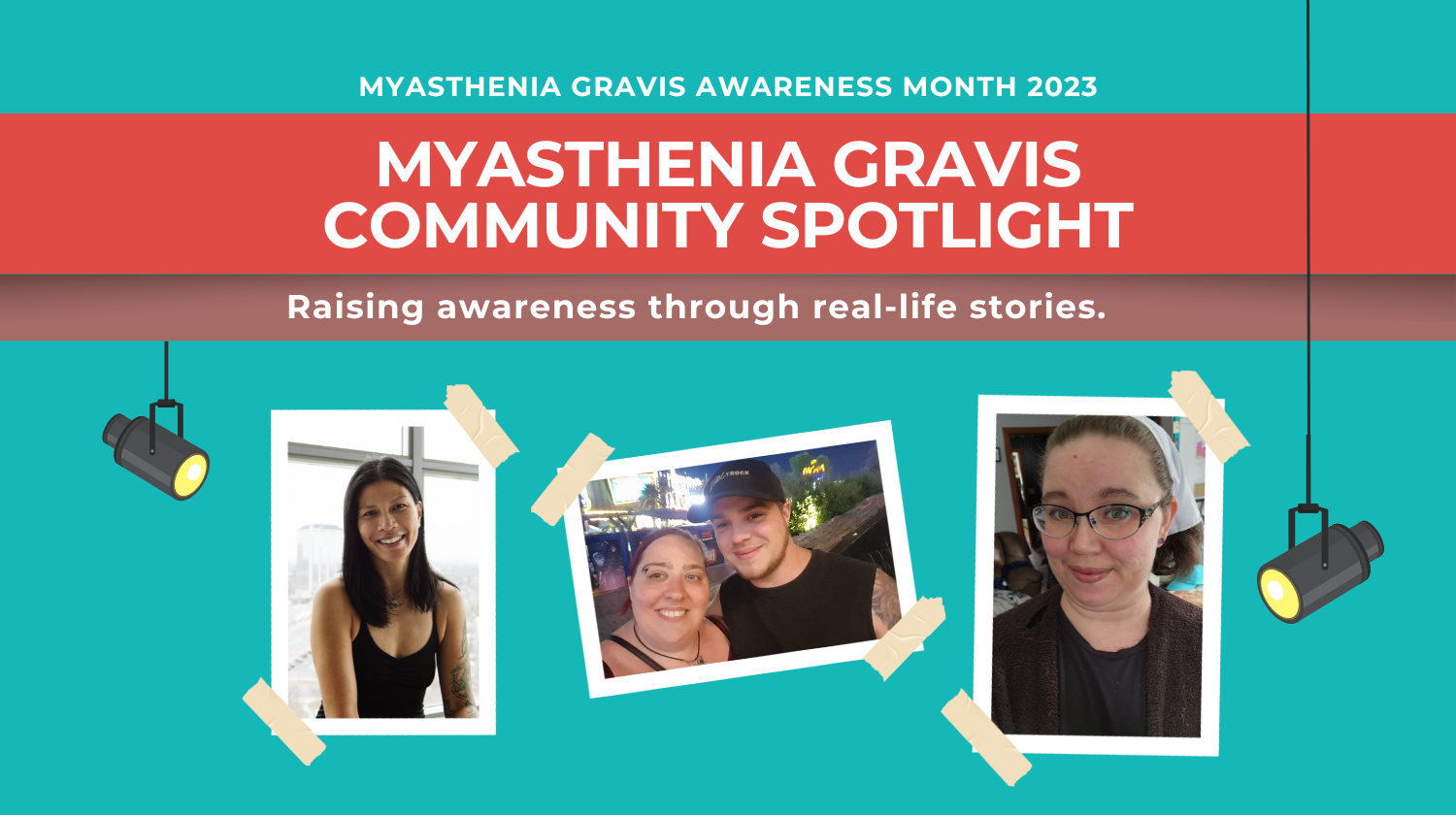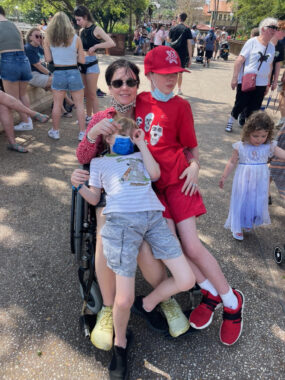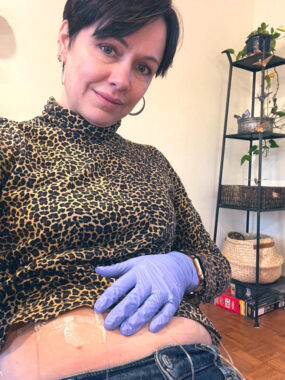How an MG diagnosis was personally transformative


With MG, Siobhán Mattison says she looks well and can walk — until she can’t. Her kids never mind the ride, though. (Photo courtesy of Siobhán Mattison)
This is Siobhán Mattison’s story:
I’ve had autoimmune symptoms for much of my life, but I never thought much about it. They never really interfered with my busy life.
I’m an academic and a mother of two boys, including one with special needs. I’m also an anthropologist, so I travel and work in remote places with high disease exposures. I’m always on the go and striving for excellence. I’m a driven and ambitious person with a Type A personality, and until recently, I didn’t understand people who weren’t. In reality, I was ableist.
This perspective changed in 2016 when I was 36, caring for my then 1-year-old son, and in a new academic position. That year, I was given the gift of a disabling condition.
My decline was gradual at first. I held on to my athleticism, was active in local choirs, and otherwise charged ahead, denying that anything was truly wrong.

The drooping of Siobhán’s eyes became so bad that she eventually had surgery to fix the condition. She says it looks a lot worse than it was. (Photo courtesy of Siobhán Mattison)
Fast forward to 2019: My eyelids began drooping, my breathing became strained, and I was easily exhausted, experienced flu-like symptoms, and lost my voice again and again. Within several months, I went from running several miles at a time to walking just one — slowly.
I visited expert specialists across the country, but the answers were elusive until we discovered that I had a rare myasthenia gravis (MG) autoantibody called anti-titin. That, plus a positive single-fiber electromyography, changed my life forever. Around February 2020, I was diagnosed with myasthenia gravis.
Treatment was initially slow to come. I kept up with my work as best I could between doctor appointments, but I was sure I was dying. I wrote to-do lists for my husband and a Twitter manifesto that I directed him to send out if I died. My neighbors slowly grew cautious about stopping by, embarrassed when they caught me breaking down.
The pandemic – which was awful for many reasons — provided space that I otherwise would not have had to navigate this difficult and rare condition. I worked odd hours, and when I couldn’t drive or walk well, I worked on my laptop while on the sofa or in bed. When my eyelids drooped, I could turn off the Zoom camera.

Treatment for Siobhán started with intravenous immunoglobulin infusions and then switched to subcutaneous immunoglobulin (SCIg) injections this year. She says her veins are small, so SCIg was easier to manage and provided her more freedom. (Photo courtesy of Siobhán Mattison)
When I had to start using a walker, my treatment became stronger. Intravenous immunoglobulin and then subcutaneous immunoglobulin were game-changers that restored some of the function I had lost. I can now walk a mile or so without too much difficulty, I do dance videos and yoga for exercise, and I work most weeks without having to recover on the sofa afterward.
For all of this, I am grateful. As a result of MG, I have devoted much of my diminished energy to issues surrounding disability, using my platforms to promote access, equity, and inclusion, especially in workplaces that support science. Reorienting myself toward believing people’s struggles rather than denigrating them has had ripple effects in all of my relationships.
In the end, I’ve embraced MG for its complexity and transformative powers, for its paradoxical bitterness and sweetness. On this journey, my tired legs support a fuller heart than my athletic ones ever could.
In recognition of Myasthenia Gravis Awareness Month in May, the MG Community Spotlight campaign features a series of stories highlighting the real-life experiences of people affected by MG, written in their own words. Follow us on Facebook and Instagram for more stories like this, using the hashtag #MGSpotlight, or read the full series.






